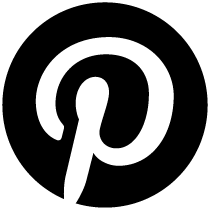Tolia Astakhishvili and James Richards: Innovations in Architectural Film
The frequent collaborators discuss sharing humorous photos, distorting 3D models and the continuous flow of exchange that fuels their creative process
The frequent collaborators discuss sharing humorous photos, distorting 3D models and the continuous flow of exchange that fuels their creative process

This piece appears in the columns section of frieze 250, ‘ON SET’
Marko Gluhaich How did your collaboration begin?
James Richards Our work together grew organically out of our separate practices. In 2018–19, I curated a series of exhibitions – at Cabinet in London, Chapter in Cardiff and Delmes & Zander in Cologne – for which Tolia made installations to display her own drawings or works by other artists. It was so fun exploring the cities together and gathering found objects for her work that, somehow, I kept getting more and more pulled into its production. Often, I would spend the days with the install teams hanging the other parts of the show, and the evenings with Tolia, covering her work with graffiti and coffee stains. Until, at some point, it was like: ‘Oh, we’re making work together now!’
Tolia Astakhishvili Yeah, suddenly the curator was a collaborator! I find our collaboration both mysterious and funny. As artists, our energies can be challenging to describe. The process is usually like a game, very joyful and spontaneous. And, once the flow starts, the work makes itself …

MG Your individual and collaborative works often involve different kinds of archives. How does research figure in your practices and does your approach differ when you are working on a project together?
JR There’s no real boundary between the research for a work and the work itself, or between documentation and raw material. That’s generally true of both of our methodologies: practice as an ongoing enquiry. We started to use documentary photos of previous installations to create collages, blending with ‘real world’ materials that had been shared during the preparations – a kind of personal cosmology of references that includes images from our respective studios, medical textbooks, faded maps and goofy bumper stickers.
TA When we travel or work on our individual projects, we send each other whatever inspires us and, at some point, those images end up digested in our collages. I love James’s sense of humour. We often have visual conversations and sometimes I respond with drawings or photos of strange places, like building sites inside subway stations or half-closed toilets: these places are unique because they are both public and private at the same time. At other times, I come across a found image that really captivates me; I don’t know why, but I know immediately that we’re going to do something with it! I’ll send an image to Jim, and then he might send it back reworked in Photoshop, so that it’s almost unrecognizable. We keep adding, manipulating and circulating our footage.

JR People ask if our work is about archives, but it’s hard to talk about archives as if they are somehow rarefied and separate from life. We’re just working with our phones, for the pleasure of sharing, living in the city and making art. Mood boards or threads of references sent between us become a kind of raw material for more work. The word ‘archives’ makes me think of mausoleums or cul-de-sacs, whereas my interest lies more in flow – a living stream – and how exchange builds until it becomes a shared mode of looking. In other words: how collaboration can allow you to step into other ways of seeing.
TA Prior to working on the video I Remember (Depth of Flattened Cruelty) [2023], we started by creating digital slides and printing them in analogue format, showing them in group shows on DIA slide machines – it was enjoyable to see the sequences building up. It is especially exciting to be able to manipulate Jim’s imagery, to be deep in the universe of another. It became a form of communication using things, works, thoughts. It’s another kind of language between us. It’s very playful.
MG A work like I Remember deals with how to capture architecture, specifically as it pertains to the presentation of artworks. What are the challenges of documenting/ capturing space?

JR We made I Remember by adopting a form of hybrid animation. Initially, we were projecting individual slides of our rather comical, lo-fi Photoshop collages. Then, we tried presenting simple analogue slide shows with them. A bit later, working with Roy Stuvey, a special effects person with whom I have collaborated on a few productions, we developed this hybrid depth animation technique where the nonsensical Photoshop collages we had made of basements, creepy lifts and installation documentation got folded back into a virtual 3D space. The collages were then projected into virtual rooms, adding glitch, distortion and woozy perspective. Once we had the visuals, we worked with the artist Max Bloching on a soundtrack, trying to make ‘realistic’ environmental audio for these totally unrealistic spaces. It’s a ghostly attempt at comedy.
The video was made for Tolia’s show [‘The First Finger’, 2023] at Bonner Kunstverein. It was always intended to be seen embedded within a bigger cosmology of real materials. The idea that, at the heart of all this IRL materiality – of dust, grain and stain – there could be this projected magic lantern of immaterial imagination: stuff dreaming of stuff, digesting itself into baroque and ridiculous forms. Sometimes, even things encountered in the show could appear in the video, in the way events from your day can pop up in your dreams. We played a lot with the space where the work was shown, imagining this wonky scenario – a motley assembly of retrieved chairs – to suggest a haunted screening room in a school or youth centre.
When I project a film onto the wall, it interacts with the memory of the gallery’s architecture.
TA Instead of using gallery walls as a space to hang drawings and paintings, I find it more interesting to build and create the room myself, either as a digital or a physical architecture. I feel like there are fewer boundaries, and I like this emancipation from the gallery wall. I like to play with the wall’s texture and sections, fragments from other installations, scale and narratives; I see the screen as a wall ‘skin’, which can be transported from one place to another.
When I project a film or a slide onto the wall, it interacts with the memory of the gallery’s architecture: it occupies a status between painting and installation. These projections, with their collaging together of photos of previous installations and of public spaces, demonstrate how memory influences the reality of their presentation. We often use close-up photographs of the installations blended with found footage and show them as part of the installations. Sometimes, we also use photos from the install period, revealing the process of construction, so we can see layers of time.

MG Are you working on anything new?
JR It’s hard to talk about the new in terms of my work: I find things tend to roll and re-use themselves; new experiments are added to old favourites. Shows in new settings often result in intense periods of on-site experimentation, reacting to what’s there – the shape of the room, say, or its acoustic qualities.
I’ve been working on a film for the last two years and plan to exhibit the ‘finished’ cut in a show this spring at Grazer Kunstverein. I’m also working on a curatorial project with Fatima Hellberg for Mumok, Vienna, in 2026. We’re working across the whole building; Tolia will also be a part of it.
TA It’s true – the forthcoming is not necessarily new; it grows from previous works in new contexts. I’m working on a show curated by Hans Ulrich Obrist at the Nicoletta Fiorucci Foundation in Venice that includes our collages and film. We are working with unfinished and ongoing materials, which always feels new. There’s a great sense of surprise as to how it will evolve and what kind of afterlife it will have.
This article first appeared in frieze issue 250 with the headline ‘Writing on the Wall’
Main image: Tolia Astakhishvili and James Richards, Our Friends In the Audience (detail), 2024, digital print.Courtesy: the artists.






















